As part of this big STH project, we had a tool that proved invaluable. The Fluke MultiFiber Pro ended up saving an enormous amount of time. It is also quite costly, but we just wanted to quickly show what the tool does, and why it ended up saving many hours for the STH team.
Fluke MultiFiber Pro
The Fluke MultiFiber Pro set is designed to test MPO/ MTP runs. Our project that is going to be featured in Q1 of 2021 has over 1700 fibers run and all of it is using MTP-12. That led to a different challenge than we would have had with just running standard LC pairs, and that was simply the amount of fiber. Each cable is made of twelve fibers and these MTP-12 cables are bundled into sets of 96 or 144. Ensuring that the cables work properly before and after installation is a big deal. To that end, we had to test a lot of fiber and so Fluke let us borrow its MultiFiber Pro kit, exactly for this type of application.
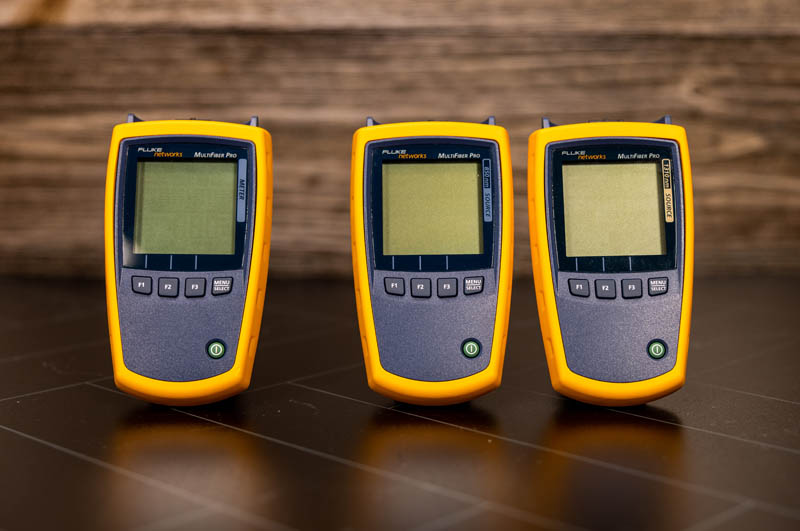
The kit consists of two light sources along with a meter. We will quickly note that there are kit options to just get 850nm or 1310nm light sources depending on what you might need to certify. While contractors will typically buy these units, many of us that just need them for a job will rely on online training and often rent these units from a rental house. This kit was >$10,000 online to purchase which is why they are often rented.
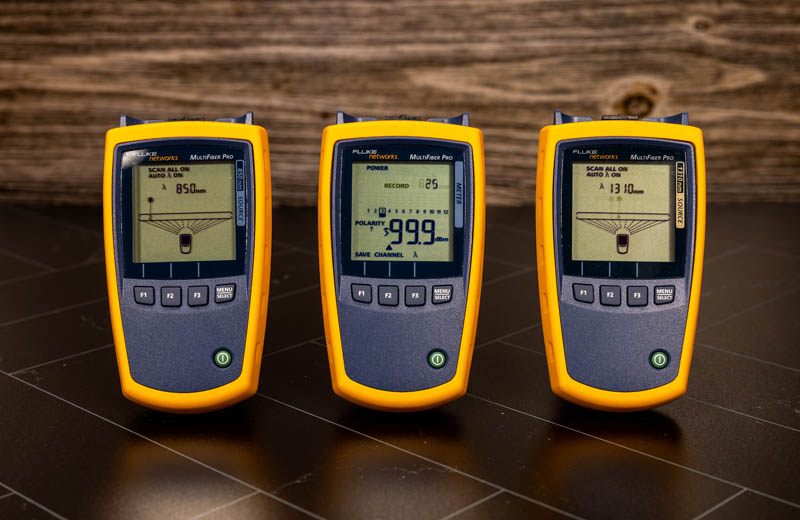
The meters work by setting a reference point, then measuring the connection quality over the fiber run once that reference is set. These photos have a coiled cable, but when setting the reference you would first ensure that the connectors are clean, then insert the clean connectors and make sure the cable is uncoiled. This is just being done for photography purposes, not as a training guide.
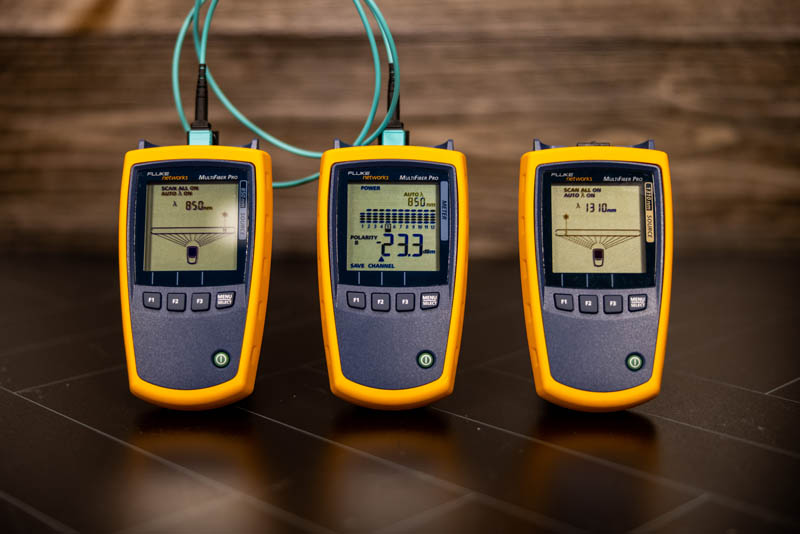
In MTP-12 connections, for example, there may be several fibers that have an excellent connection, but on the same connector, there can be others that do not.
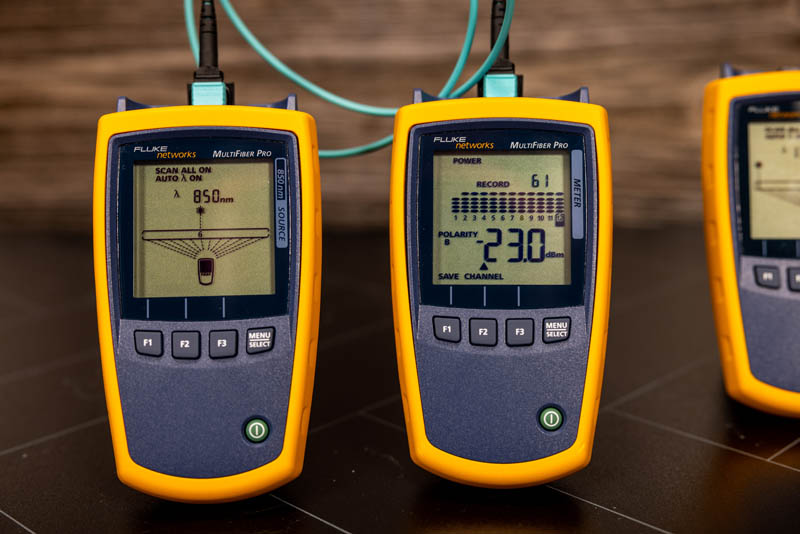
One of the other nice features of the units is that they can detect polarity. We still do not have our MPO/MTP polarity guide up. If you have not worked with MTP, basically the fibers in the cable can be arranged so that they are at different spots keyed on the other end. Having the test equipment validate that is excellent, especially once everything is installed. In a standard two fiber LC cable one may have one fiber where data is being sent and the other where it is being received so it is important to have these correctly aligned. MTP polarity is an important concept so having an easy read-out is great.
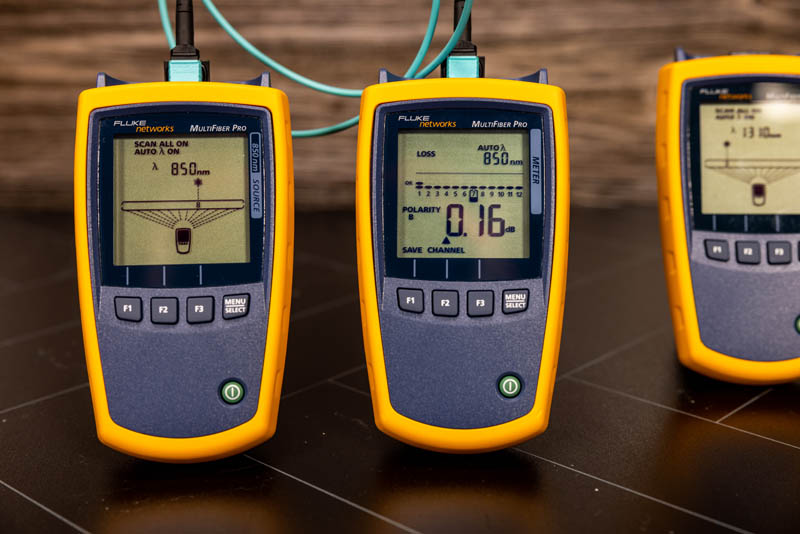
Here is just an example where fiber #1 below is a different value than #7 above.
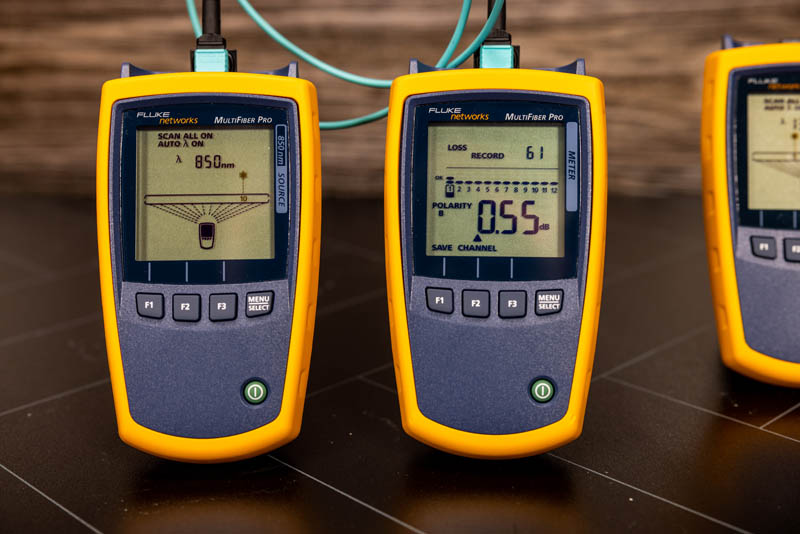
Just as a few bits here, dBm is the absolute power measurement, not the loss value that we would get with dB. One of the really nice things is that the meter can save a set of results for a given cable. The record above is 61 and the meter can save thousands of tests and then link with the desktop software for documentation purposes.
We have been showing the 850nm source that is common for multi-mode fiber, but there is another 1310nm light source.
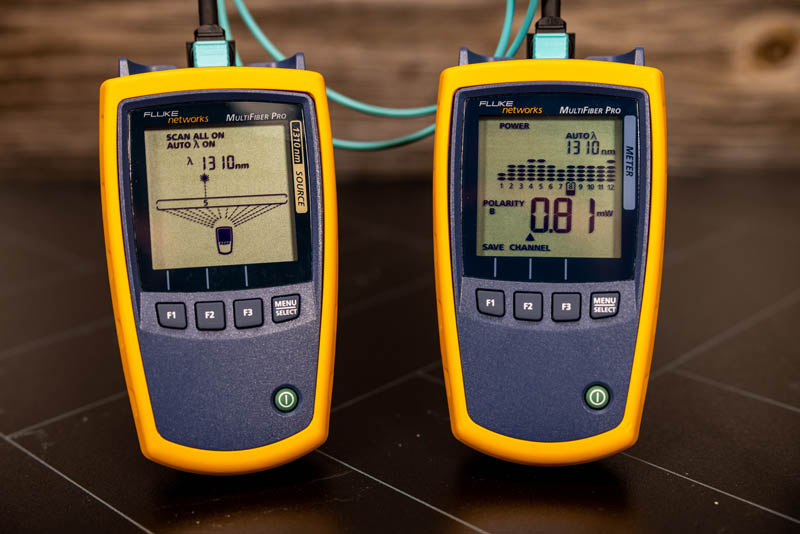
This 1310nm light source works in a similar manner where it can push light through the different fibers on the MTP-12 cable.
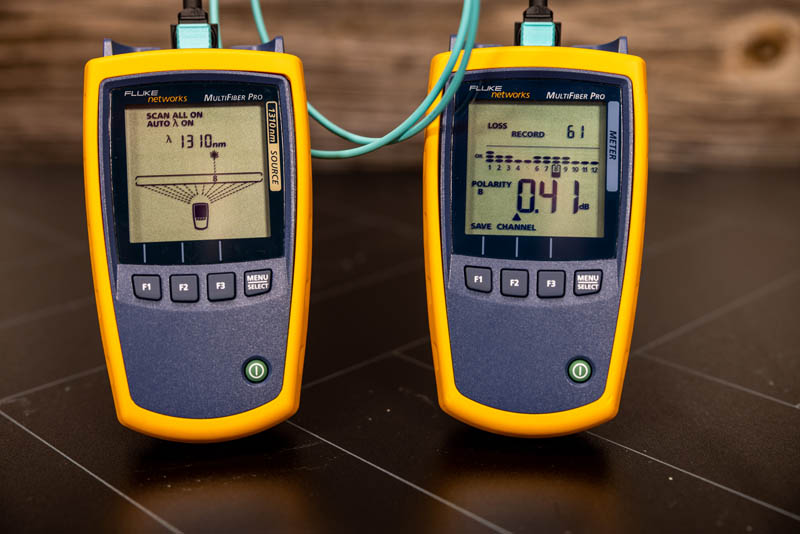
One other nice feature is that if a result goes over a threshold (each dot is 25% of the limit that one) there is a little not OK symbol that comes out.
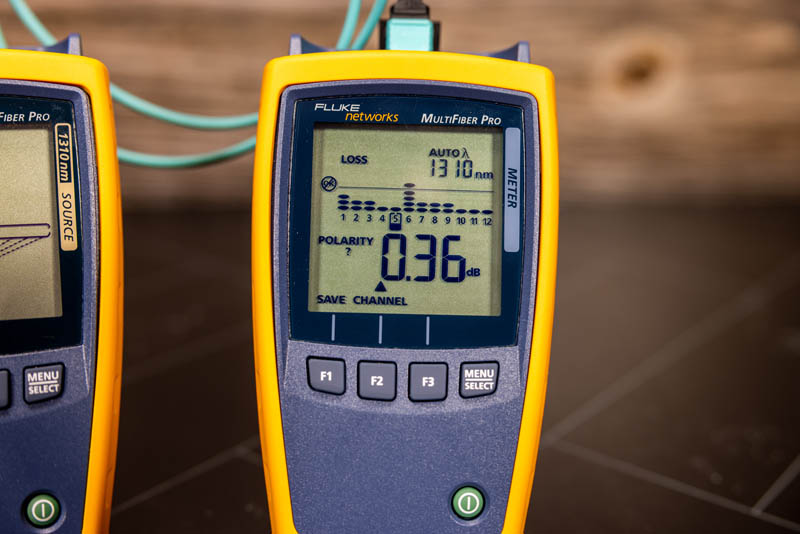
One meter, two light sources, but what is the impact, and why use this kit specifically? That is the question we answered.
Testing at the MTP-12 Level Impact
Each time a fiber connection is made, or a new piece is added to the installation, you would ideally want to test to ensure that you do not have too much loss. This can be from one of the components or simply due to dust (click cleaners are widely used here.) On an installation, like we are doing, that is ~1700 fibers.
Doing 1-2 fibers at a time, versus 12 may not seem like a big deal, but we also had another setup using a CertiFiber Pro and another solution that we tried previously. The actual scanning takes less time than letting the light sources stabilize (~5 min before you set reference) but what we found was that the time spent changing MTP runs was enormous.
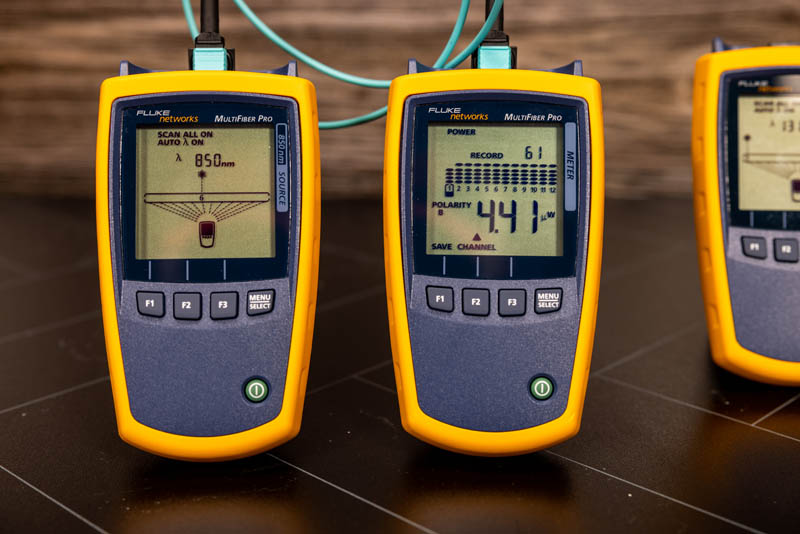
For some sense, the total time for a two-person team (both the light source and meter need to be moved, test run) was dominated by the coordination efforts, especially once the cables were off of their spools. In contrast, the time spent on the actual scanning was relatively small. Using the MTP-12 solution, we ended up roughly 5x faster (4.91) using the MultiFiber Pro versus adapting the MTP to SC/LC connectors and testing via a breakout. On ~1700 fibers and several re-tests, this was days of time savings. If we had 1-10 cables, maybe it would have been practical to test individually. At over 140 MTP-12 runs, a tool like this was absolutely necessary.
Final Words
At STH, we are not trade fiber installers. Still, since we did try both the breakout as well as the MTP-12 solution, it was not even close. The MultiFiber Pro saved us an enormous amount of time. We found two cassettes that we are not going to use as a result of this testing, so the effort was well worth it. In a lot of what we test with servers, storage, and networking gear, we see a few seconds or minutes of improvement for different solutions. Native MTP-12 testing was easily one that saved us days or weeks in terms of doing the installation.
Again, a quick thank you to Fluke for allowing us to borrow these units. We will have another little piece on the CertiFiber Pro and then you will likely see these in some of the content on the massive fiber project.

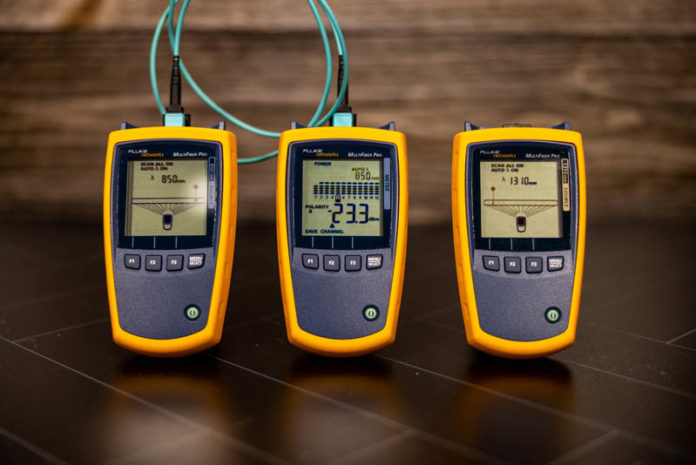



How’d you even know these were things? I didn’t know they even existed.